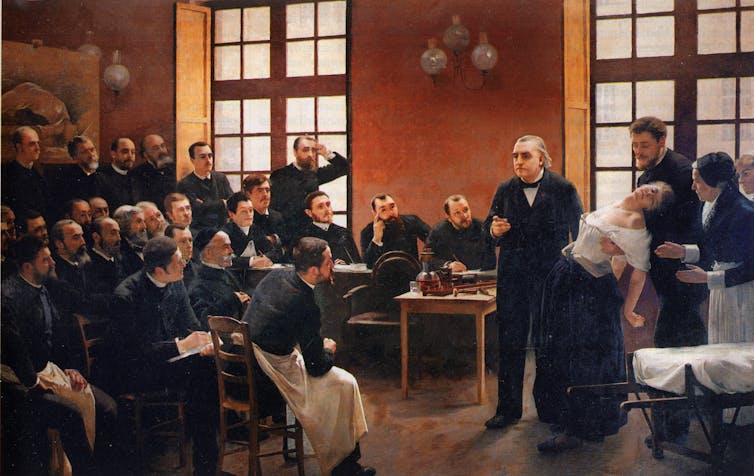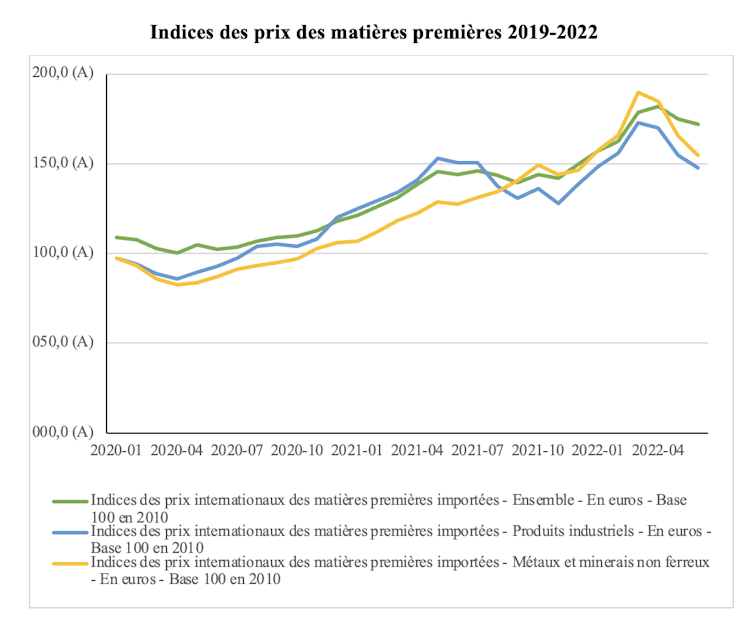Source: The Conversation – Canada – By Farinaz Basmechi, Doctoral researcher, Feminist and Gender Studies, L’Université d’Ottawa/University of Ottawa
Last month marked the third anniversary of the Woman, Life, Freedom movement in Iran, an uprising that has been described as the country’s most significant movement since the establishment of the Islamic Republic.
Though authoritarian powers and patriarchal systems continue to oppress, women journalists in the Middle East have combined reporting and activism. Many of these professionals operate under regimes that criminalize dissent. For them, reporting isn’t just a profession, it merges with acts of resistance.
Across the region, journalists like Egypt’s Lina Attalah, who continues to publish investigative reports despite state repression, and Yemen’s Afrah Nasser, whose exile hasn’t silenced her voice, act as catalysts for change, using their platforms to amplify marginalized voices, challenge oppressive systems and mobilize communities in liberation-focused movements.
Through the years, their work has gone far beyond reporting news and has become a vital force for truth, justice and social transformation in the region.
Telling the truth under threat
Ever since social media and blogs became widely accessible, women journalists have stood at the forefront, playing a crucial role in raising awareness of inequality, often in competition with predominantly male-dominated mainstream news outlets that are heavily censored or operate under tight government influence.
My Stealthy Freedom (MSF), for example, one of the most prominent social movements in Iran, was launched in 2014 by exiled Iranian journalist Masih Alinejad. What started as a Facebook page supporting Iranian women’s autonomy in making personal choices about their dress quickly gained more than one million followers.
In May 2017, MSF launched the #WhiteWednesdays campaign, encouraging participants to wear white headscarves or other symbols on Wednesdays as a visible form of protest against the mandatory hijab law. The campaign later expanded through tactical hashtags like #MarchingWithoutHijab and #OurCameraIsOurWeapon.
While Alinejad was working abroad, the government arrested her brother to pressure her to end her activism. In addition, New York police arrested two men involved in a murder-for-hire plot against her.
In Lebanon, independent journalist Luna Safwan, who covers corruption, gender-based violence and protest movements, has experienced co-ordinated online harassment for her critical reporting on Hezbollah and gender inequality. She faced two defamation SLAPP suits from her harasser and his lawyer after she and six other women publicly accused activist Jaafar al-Attar of sexual misconduct in 2021.
Lina Attalah, editor-in-chief of Mada Masr, one of the few remaining independent media outlets in Egypt, has been detained several times for publishing investigative reports on government corruption and women’s rights. She continues to advocate for press freedom and digital security for journalists under authoritarian regimes.
Award-winning Yemeni journalist and blogger Afrah Nasser was forced to flee into exile after documenting human rights violations and gender-based violence during Yemen’s civil war. As a researcher with Human Rights Watch, she continues to advocate for accountability, freedom of expression and justice for victims of war crimes in Yemen.
Yara Bader, a Syrian Journalist and human rights advocate who leads the Syrian Center for Media and Freedom of Expression, has exposed state-led detentions, torture and media suppression. Despite facing arrest and exile, she continues to advocate for press freedom and the protection of detained journalists in Syria.
In Tunisia, Lina Ben Mhenni — a blogger, digital activist and journalist — used her blog, A Tunisian Girl, during the Arab Spring to report on rural and under-covered regions. She documented police brutality and government repression and helped expose injustices to both the Tunisian public and the international community. She later became an advocate for human rights and freedom of expression in Tunisia.
Al Jazeera Palestinian journalist Bisan Owda has used her Instagram account to issue calls for global solidarity since 2023. The reporting of Owda and others from Gaza, like Hind Khoudary and Youmna ElSayed, have led to worldwide demonstrations, including a global strike on university campuses in 2024 and, more recently, the global strike in August 2025.
Middle Eastern women journalists like these have been crucial in documenting on-the-ground realities and mobilizing resistance against colonial, authoritarian and patriarchal violence.
Reclaiming the narrative digitally
The truth is that Middle Eastern women journalists have been actively reporting in places like Palestine and covering other conflict zones, often under dangerous conditions, for a long time.
While on the job, for example, veteran Al Jazeera reporter Shireen Abu Akleh was fatally shot by an Israeli soldier during a military operation in Jenin despite wearing a clearly marked “press” flak jacket.
Social media and blogging sites have given women journalists the platforms needed to spread messages of resistance.
And although Middle Eastern women journalists face a dual struggle — against patriarchal state structures and lingering colonial forces — they persist, fighting for a more equitable world and to mobilize others toward that goal.
In today’s world, where human rights seem increasingly fragile, Middle Eastern women journalists demonstrate determination and resilience. They advocate for human rights and fight against gender-based violence while shaping narratives and striving for social transformation within their geopolitical contexts and beyond.
In many Middle Eastern countries, access to official news channels is often reserved for reinforcing authoritarian narratives, while feminist journalists act as agents of change, using widely accessible platforms — particularly social media — to create spaces for awareness and reform.
Women journalists resist oversimplified portrayals of women as oppressed by family, state or colonial power. They reveal women’s role as active agents of change, exposing injustice and advancing movements for equality.
![]()
Farinaz Basmechi does not work for, consult, own shares in or receive funding from any company or organisation that would benefit from this article, and has disclosed no relevant affiliations beyond their academic appointment.
– ref. In the Middle East, women journalists and activists have been driving crucial change – https://theconversation.com/in-the-middle-east-women-journalists-and-activists-have-been-driving-crucial-change-265273








